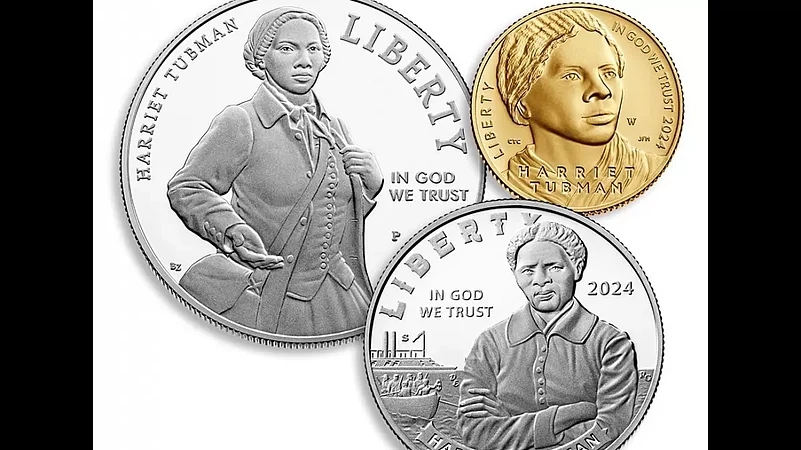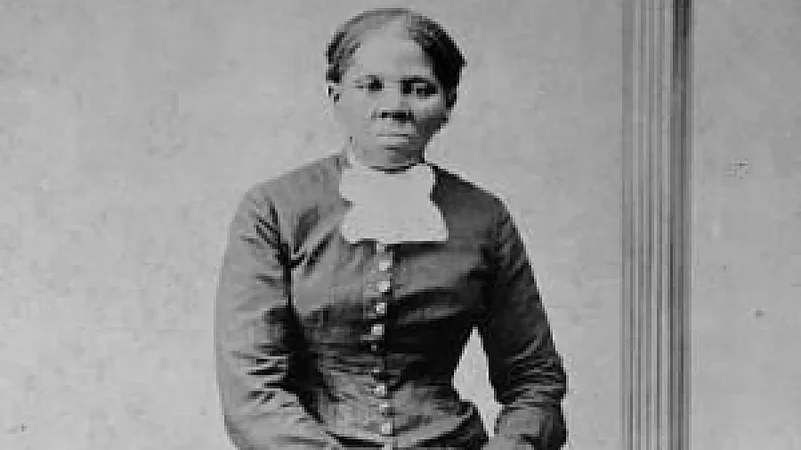The U.S. Mint initiated the sale of coins honoring abolitionist hero Harriet Tubman on Thursday, marking a significant milestone ten years after former President Barack Obama advocated for Tubman to be featured on the $20 bill.
Commemorative Tubman coins, including $5 gold coins, $1 silver coins, and half-dollar coins, were made available for preorder on Thursday and are scheduled to commence shipping in February, as announced by the U.S. Mint. A complete set featuring all three coins is priced at $836.25.

Ventris C. Gibson, the director of the U.S. Mint, expressed in a news release, "Every coin produced by the United States Mint helps to tell a story that teaches us about America’s history or connects us to a special memory. We hope this program will honor the life and legacy of Harriet Tubman and inspire others to learn more about this amazing woman."
Each coin bears an associated surcharge: $35 for every $5 gold coin, $10 for each silver dollar, and $5 for every half dollar sold. The surcharge, according to the U.S. Mint, will be evenly distributed between the National Underground Railroad Freedom Center in Cincinnati, Ohio, and The Harriet Tubman Home, Inc., a non-profit organization located in Auburn, New York.
This announcement follows Obama's 2014 initiative to feature Tubman on the $20 bill after receiving a letter from a girl in Massachusetts advocating for women on currency. U.S. Rep. Gregory Meeks introduced legislation to create the coins during Black History Month in February 2020, emphasizing Tubman's monumental courage and role as a symbol of strength and leadership during times of immense hardship. As a vital conductor in the Underground Railroad, Tubman provided hope for slaves escaping the cruel bonds of human bondage.
Who was Harriet Tubman?
Harriet Tubman was an extraordinary American who wore many hats: an escaped enslaved woman, a "conductor" on the Underground Railroad, a Union spy, a women's suffrage supporter, and a nurse. Her life story is one of incredible courage, resilience, and dedication to freedom.
Born Araminta Ross in Maryland around 1822, Harriet faced the harsh realities of slavery from a young age. She was physically and emotionally abused, and forced to work in grueling conditions.
In 1849, at the age of 29, Harriet made the decision to escape to freedom. She braved a perilous journey on foot and by boat, eventually reaching Pennsylvania, a free state.

Risking her own life, Harriet returned to the South on numerous occasions to guide other enslaved people to freedom. She became known as a "conductor" on the Underground Railroad, a network of secret routes and safe houses that helped enslaved people escape to the North. She is estimated to have led hundreds of people to freedom.
During the Civil War, Harriet put her skills and knowledge to use for the Union cause. She worked as a nurse, a spy, and a scout, providing valuable information and assistance to the Union Army. She is even credited with leading the raid at Combahee Ferry, which freed over 700 enslaved people, making her the first woman to lead an armed expedition in the war.
After the war, Harriet continued to fight for justice and equality. She was a vocal supporter of women's suffrage and other social justice causes. She also helped to establish an orphanage for African American children and worked tirelessly to improve the lives of her community.


























